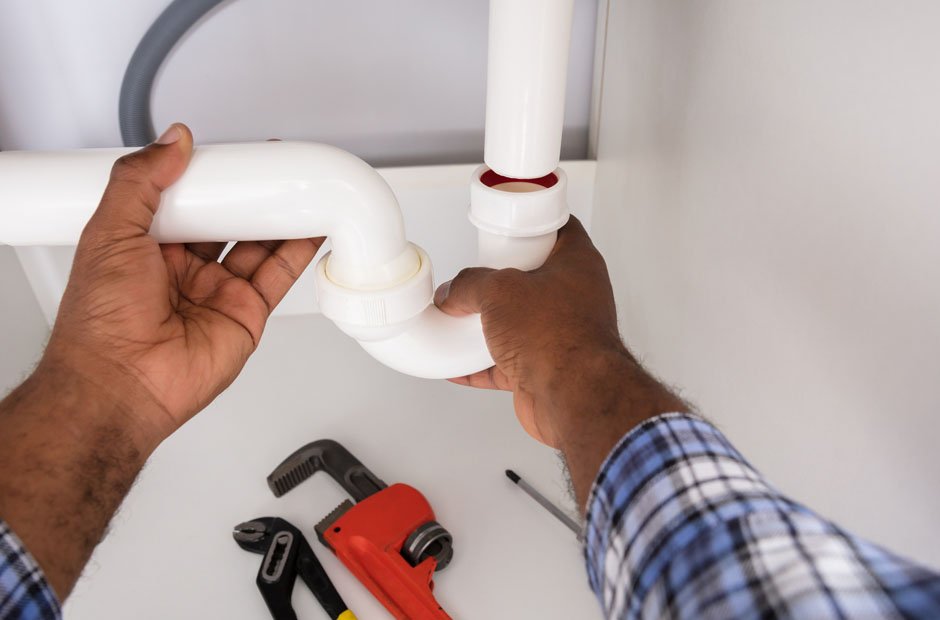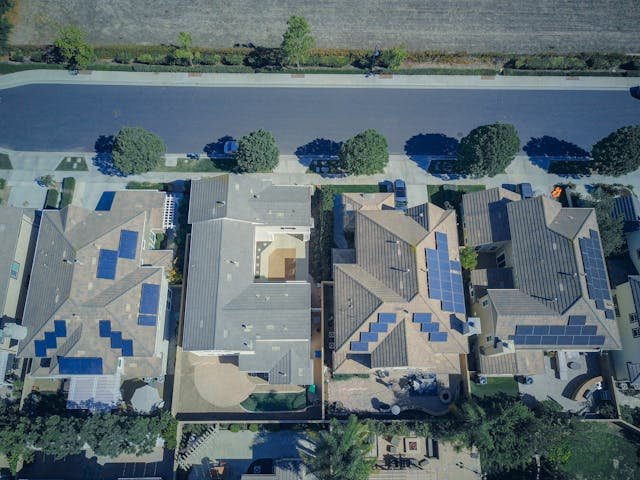Pipes and fittings are integral components in various systems, including plumbing, heating, and industrial processes. They serve to transport fluids and gases, ensuring the efficient and safe operation of numerous applications. Understanding the different types of pipe materials and fittings is essential for selecting the appropriate components for specific uses, maintaining system integrity, and ensuring longevity. We will explore the various pipe materials and fittings, their characteristics, applications, and considerations for use. Plumbers from Archer Plumbing LLC play a vital role in advising on selecting, installing, and maintaining pipes and fittings, ensuring that systems meet regulatory standards and function optimally.
Types of Pipe Materials
Metal Pipes
Metal pipes, including steel, copper, and cast iron, are widely used for their strength, durability, and ability to withstand high pressures and temperatures. Steel pipes, such as carbon steel and stainless steel, are common in industrial and high-pressure applications. They are known for their toughness and resistance to corrosion, especially when treated or coated. Copper pipes are favored in plumbing for their excellent thermal conductivity and resistance to corrosion, making them ideal for hot and cold water distribution. However, heavier and less flexible cast iron pipes are often used in underground applications due to their robustness and long lifespan.
Plastic Pipes
Plastic pipes have gained popularity due to their versatility, ease of installation, and cost-effectiveness. Common plastic materials include PVC (polyvinyl chloride), CPVC (chlorinated polyvinyl chloride), PEX (cross-linked polyethylene), and HDPE (high-density polyethylene). PVC pipes are widely used in plumbing, drainage, and irrigation systems for their resistance to chemicals and low cost. CPVC pipes are similar but can withstand higher temperatures, making them suitable for hot water systems. PEX pipes are flexible, easy to install, and often used in residential water supply systems. HDPE pipes are durable, resistant to impact and corrosion, and used in industrial and agricultural applications.
Composite Pipes
Composite pipes combine different materials to enhance performance characteristics. These pipes often include metal and plastic layers, offering the benefits of both materials. For example, PEX-AL-PEX pipes feature an aluminum layer sandwiched between two layers of PEX, providing strength, flexibility, and barrier properties. Composite pipes are used in applications requiring high durability, flexibility, and resistance to various environmental factors. They are commonly found in gas distribution, radiant heating systems, and industrial fluid transport.
Types of Pipe Fittings
Elbows
Elbows are fittings used to change the direction of a pipe run. They are available in various angles, such as 90 and 45 degrees, allowing flow redirection in piping systems. Elbows can be made from various materials, including metal and plastic, used in plumbing and industrial applications. They are crucial for routing pipes around obstacles and ensuring efficient use of space within piping systems.
Tees
Tee fittings connect three pipe sections, allowing the flow to split or combine. They come in different configurations, such as equal tees, where all three ends are the same size, and reducing tees, where one or more ends are smaller. Tees are essential for branching off main lines to distribute fluids or gases to multiple locations. They are used extensively in water distribution, heating systems, and industrial processes.
Couplings
Couplings are fittings used to connect two straight pipe sections. They come in various types, including straight couplings, reducing couplings, and slip couplings. Straight couplings join pipes of the same diameter while reducing couplings connect pipes of different diameters. Slip couplings allow for easy connection and disconnection, facilitating maintenance and repairs. Couplings are fundamental in extending pipe runs and joining sections in plumbing and industrial systems.
Adapters
Adapters are fittings used to connect pipes of different types or sizes. They come in various forms, such as male and female, threaded and unthreaded, and union adapters. Adapters enable the integrating of different piping systems, such as connecting plastic pipes to metal pipes. They are crucial for ensuring compatibility and flexibility in piping networks, allowing for the use of various materials and sizes within a single system.
Valves
Valves are fittings that control the flow of fluids or gases within a piping system. Common types include gate, ball, check, and globe valves. Gate valves control flow by raising or lowering a gate, which is suitable for on/off control. Ball valves use a rotating ball to regulate flow, providing quick and reliable shut-off. Check valves to prevent backflow, ensuring fluid flows in only one direction. Globe valves offer precise flow control and are used in applications requiring throttling. Valves are essential for system operation, maintenance, and safety in plumbing and industrial applications.
Considerations for Selecting Pipe Materials and Fittings
Compatibility
Compatibility is a crucial consideration when selecting pipe materials and fittings. The chosen materials must be compatible with the fluids or gases they will transport and with each other. Incompatible materials can lead to corrosion, leaks, and system failures. For instance, brass fittings with copper pipes can prevent galvanic corrosion, while certain plastics may react adversely with specific chemicals.
Pressure and Temperature Ratings
The pressure and temperature ratings of pipes and fittings must align with the application’s requirements. Metal pipes, such as steel and copper, generally handle higher pressures and temperatures than plastic pipes. However, certain plastic pipes, like CPVC and PEX, are designed to withstand higher temperatures. Understanding the operational limits of materials ensures the longevity and safety of the piping system.
Durability and Longevity
Durability and longevity are important factors in choosing pipe materials and fittings. Metal pipes are known for their long lifespan and resistance to impact, making them suitable for demanding environments. Plastic pipes, while generally less durable than metal, offer corrosion resistance and flexibility, contributing to their longevity in appropriate applications. Composite pipes provide a balance of strength and flexibility, enhancing durability.
Installation and Maintenance
Ease of installation and maintenance are also key considerations. Plastic pipes are typically lighter and easier to install than metal pipes, reducing labor costs and installation time. However, metal pipes offer greater strength and may be preferred in certain applications despite the higher installation effort. Maintenance requirements vary, with some materials requiring more frequent inspections and repairs. Choosing materials that align with maintenance capabilities and budget is essential for efficient system management.
Environmental Impact
The environmental impact of pipe materials and fittings is an increasingly important consideration. Metal pipes, while durable, involve energy-intensive production processes. Though less energy-intensive to produce, plastic pipes raise concerns about plastic waste and environmental degradation. Composite pipes may offer a more sustainable option by combining materials to reduce environmental impact. Selecting materials with lower environmental footprints and recyclable properties supports sustainable practices and reduces the ecological impact of piping systems.
Innovations in Pipe Materials and Fittings
Advances in materials science and engineering have led to innovations in pipe materials and fittings. High-performance plastics and composites offer enhanced properties, such as increased strength, flexibility, and chemical resistance. Smart fittings with integrated sensors provide real-time system performance monitoring, enabling proactive maintenance and reducing the risk of failures. Innovations in joining techniques, such as push-fit and solvent welding, simplify installation and improve reliability. Staying informed about these advancements allows for adopting cutting-edge solutions that enhance system performance and efficiency.
Understanding the various types of pipe materials and fittings is crucial for selecting the appropriate components for specific applications, ensuring system integrity, and promoting longevity. Metal, plastic, and composite pipes each offer unique advantages and considerations, while fittings such as elbows, tees, couplings, adapters, and valves are essential for connecting and controlling piping systems. Compatibility, pressure and temperature ratings, durability, ease of installation and maintenance, and environmental impact are key factors in making informed decisions. By considering these factors and staying abreast of innovations, stakeholders can ensure their piping systems’ efficiency, reliability, and sustainability.
<iframe src=”https://www.google.com/maps/embed?pb=!1m18!1m12!1m3!1d196792.8913490947!2d-104.919338!3d39.5846536!2m3!1f0!2f0!3f0!3m2!1i1024!2i768!4f13.1!3m3!1m2!1s0x876c83d44f34a61d%3A0x81f10bb4953f623e!2sArcher%20Plumbing%20LLC!5e0!3m2!1sen!2sno!4v1715328296598!5m2!1sen!2sno” width=”600″ height=”450″ style=”border:0;” allowfullscreen=”” loading=”lazy” referrerpolicy=”no-referrer-when-downgrade”></iframe>
















